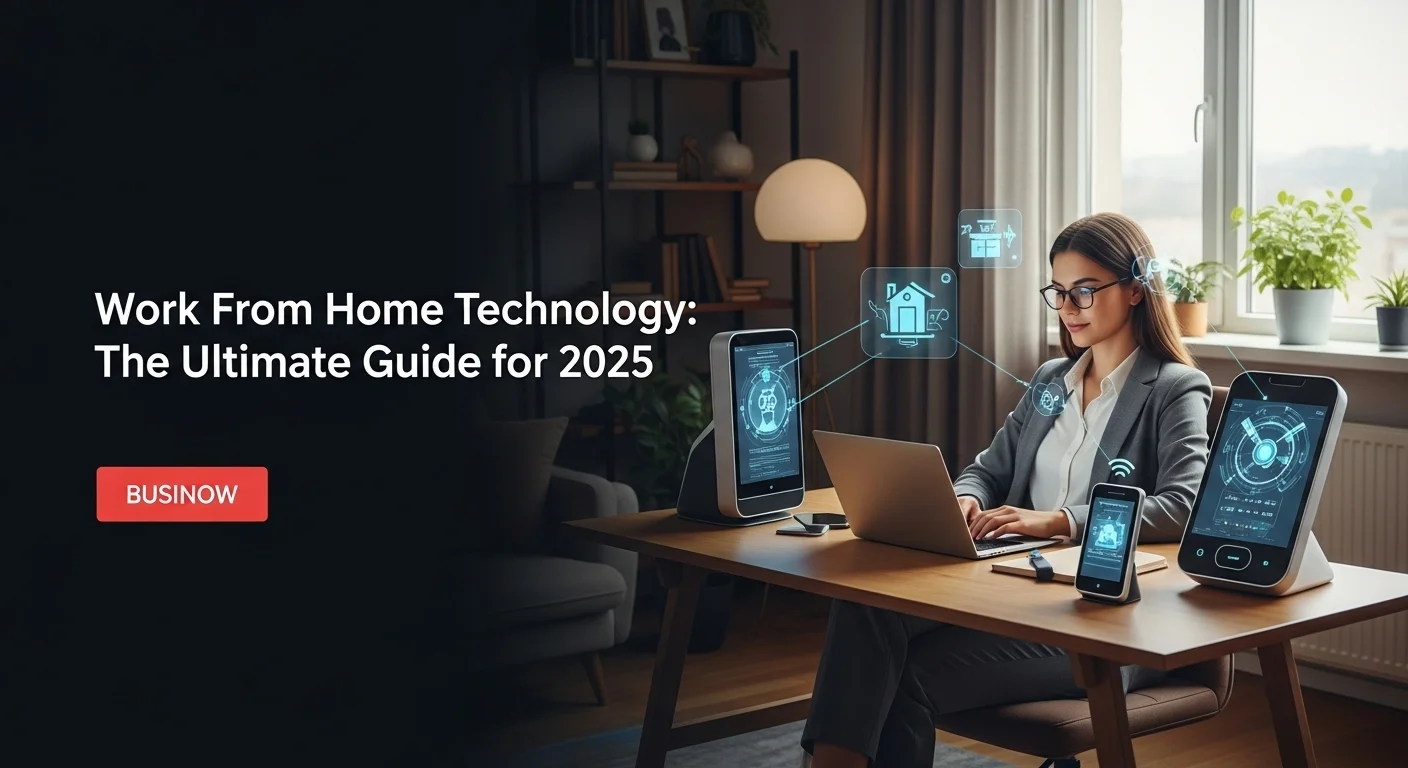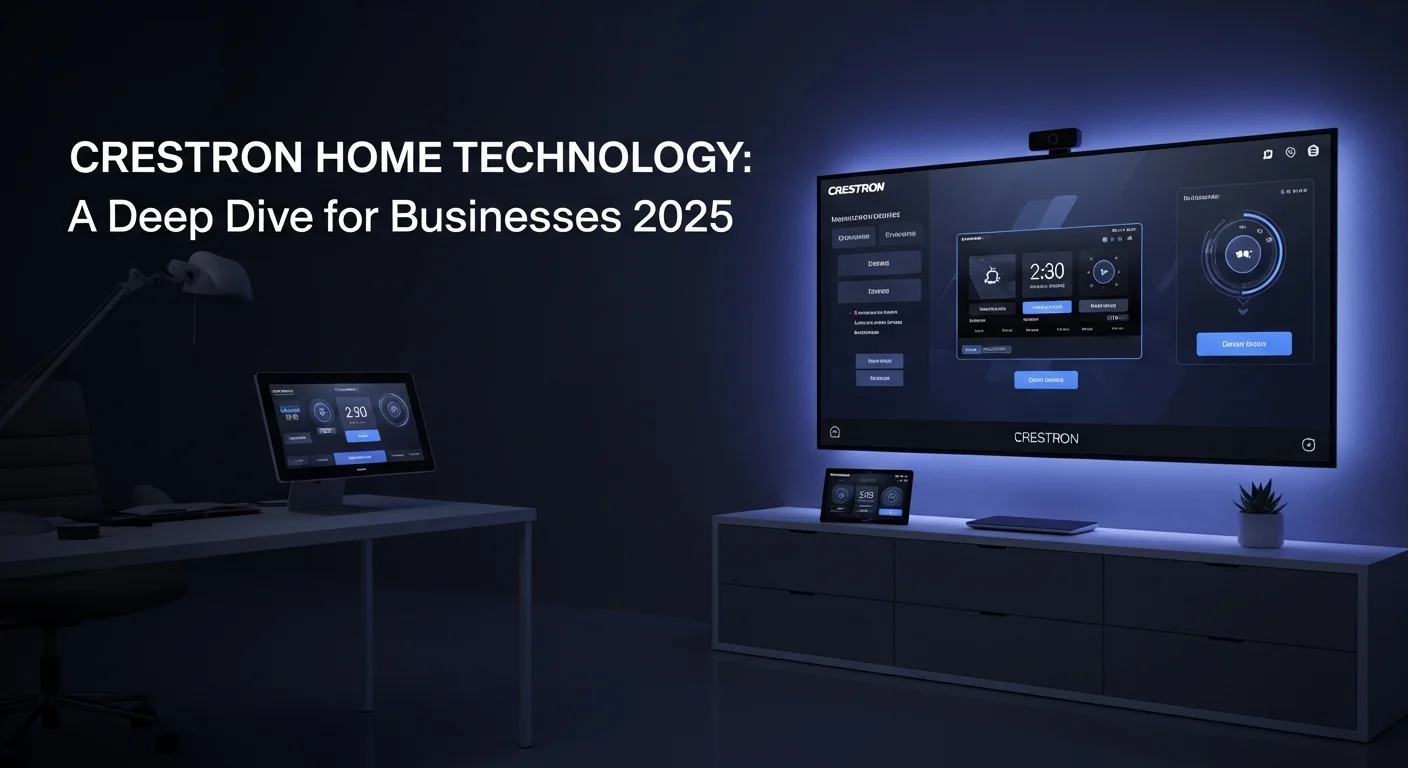Wave Smart Tech Explained: My Guide to a Smarter Home & Business

Executive Summary
Let's talk about Wave Smart technology. You might know it better by its official name, Z-Wave, and in my years as an integrator, I've seen it become the quiet hero of smart automation for homes and businesses. It's a special wireless language that lets all your smart devices talk to each other reliably. Think of it this way: while Wi-Fi and Bluetooth are shouting in a crowded room, Z-Wave is having a clear, private conversation on its own dedicated channel. This means it's incredibly stable and its signals can easily travel through walls and floors—a must for things you need to count on, like security systems and door locks. At the heart of it all is a central hub, or controller, that acts as the orchestra conductor for all your devices. The real beauty, and why I recommend it so often, is its universal compatibility. With thousands of certified products from hundreds of brands, you can mix and match to create the perfect system for you, without being stuck with one company. For a business, this opens up a world of efficiency for managing energy, security, and daily operations.
Table of Contents
Table of Contents
- What Exactly is Wave Smart and Why Does It Matter?
- How a Wave Smart System is Built
- The Magic of Making Different Brands Work Together
- Wave Smart in the Business World
- The Key Advantages I Always Emphasize
- A Look Under the Hood: How it Works
- Wave Smart vs. The Competition (Zigbee & Wi-Fi)
- Smart Strategies for Using This Tech in Your Business
- Pro Tips for an Unbeatable Smart Tech Experience
What Exactly is Wave Smart and Why Does It Matter?
In the world of the Internet of Things (IoT), there's one technology I've consistently relied on for stability and sheer 'it just works' performance: Z-Wave. You'll often see it marketed as 'Wave Smart technology,' but it's all the same powerful wireless protocol that forms the invisible backbone of so many smart homes and businesses. It was designed from the ground up for one purpose: to let electronic devices communicate for control, monitoring, and automation. This is what turns a simple light switch or thermostat into an intelligent part of a connected network, and it's a game-changer.
At its heart, Wave Smart technology uses low-power radio waves to chat between devices. Here’s the key difference I always point out to my clients: unlike Wi-Fi and Bluetooth that operate in the noisy 2.4 GHz spectrum, Z-Wave uses a much quieter frequency below 1 GHz. This is a huge deal. It dramatically cuts down on interference from your microwave, cordless phones, and even your own Wi-Fi router. The result is a far more stable and dependable connection, which is non-negotiable for critical things like security systems or door locks where you can't afford a missed signal. On top of that, these lower-frequency waves are better at passing through walls, floors, and furniture, giving you solid coverage throughout your building without needing to drill holes for new wires. This inherent reliability is why it's earned so much trust in the industry.
How a Wave Smart System is Built
A Z-Wave system is built on what we call a 'mesh network' topology, and it's a brilliant piece of engineering. In a typical Wi-Fi network, every device has to be within range of the central router. If it's too far, it's offline. In a mesh network, however, your powered devices—like light switches or smart plugs—act as signal repeaters. This means every time you add a new powered Z-Wave device, you're not just adding a new feature; you're actually making your entire network stronger and extending its reach. I've seen this in action countless times; a system that was spotty in a far corner of the house becomes rock-solid after adding a single smart plug in a hallway. The network is also 'self-healing.' If one path for a signal gets blocked, the network automatically finds another way to get the message through. It’s this resilient structure that makes the whole system so robust.
The brain of this operation is the Z-Wave controller, often called a hub or gateway. This device is your main command center, usually managed through a smartphone app. It translates your taps on the screen into Z-Wave signals that your devices understand. When you want to dim the lights, check if a door is locked, or change the temperature, the command flows through this central hub. This is also where you create powerful automation routines, like a 'Goodnight' scene that I help homeowners set up all the time—one tap locks the doors, kills the lights, and sets back the thermostat.
The Magic of Making Different Brands Work Together
One of the biggest reasons I'm a fan of Z-Wave is its strict commitment to interoperability. This is all thanks to the Z-Wave Alliance, a group of companies that ensures every product carrying the Z-Wave logo plays nicely together. They have a tough certification program that every single device must pass. What this means for you is incredible freedom. You can buy a smart lock from Schlage, light switches from Leviton, and a thermostat from Honeywell, and you can be confident they will all communicate flawlessly with your chosen hub. This creates a vibrant marketplace with thousands of certified products to choose from. It prevents you from being locked into a single brand's ecosystem and ensures your investment is future-proof, as you can always add new and innovative devices as they come out.
Wave Smart in the Business World
While many people think of this as home technology, its benefits are just as compelling for businesses. The same reliability and security that protect your home can streamline a commercial operation.
- Energy Management: I've helped businesses slash utility bills by automating lights and HVAC. Occupancy sensors ensure lights aren't left on in empty conference rooms, and smart thermostats can adjust temperatures based on business hours, saving a significant amount of money.
- Security and Access Control: This is a big one for property managers and small offices. Smart locks can be managed from anywhere, allowing you to grant or revoke access for employees or contractors without ever touching a physical key. Paired with cameras and sensors, it creates a comprehensive security system.
- Automation and Monitoring: In places like restaurants or labs, Z-Wave sensors can monitor critical conditions like freezer temperatures or humidity, sending an alert if things go out of spec. This can prevent inventory loss and ensure compliance.
- Hospitality and Guest Experience: Hotels use this tech to elevate the guest experience. Imagine guests controlling their room's lights, temperature, and drapes from a single tablet. It also helps staff by, for instance, notifying housekeeping the moment a room is checked out.
The Key Advantages I Always Emphasize
When someone asks me why they should choose Wave Smart, I boil it down to these core strengths:
- Reliability: The dedicated frequency and self-healing mesh network mean your commands get through. Period. It's the foundation of the technology.
- Security: With rising cyber threats, this is crucial. The modern S2 security framework uses AES-128 encryption—the same strength as online banking—to keep your communications private and safe from hackers.
- Low Power Use: Many Z-Wave devices, like door sensors, run on small batteries. The protocol is so efficient that these devices can last for years on a single battery, which means less maintenance for you.
- Scalability: A standard Z-Wave network can handle up to 232 devices, more than enough for almost any home or small business. And with new Z-Wave Long Range (LR) technology, that number jumps to 4,000, making it suitable for even large commercial buildings.
- Simple Installation: Because it's wireless, you don't need to run new cables. This makes installation faster, cleaner, and much less expensive than a wired system. Many devices are simple plug-and-play setups.
In short, Wave Smart technology isn't just a fleeting trend. It's a mature, secure, and robust platform that provides the real-world connectivity needed for today's smart environments. It delivers on the promise of a truly intelligent ecosystem that enhances convenience, security, and efficiency for everyone.

Your Complete Guide to Wave Smart Tech & Business Solutions
Once you get past the basics, you start to see just how thoughtfully Wave Smart technology was designed. Understanding a bit about how it works 'under the hood' and how it stacks up against the competition is key to making an informed decision for your home or business. I've spent years working with these systems, so let me give you a practical guide to the tech itself and how to apply it strategically.
A Look Under the Hood: How it Works
The Z-Wave protocol isn't just a radio signal; it's a complete communication package. This is what guarantees that a certified device from one company can talk to a certified device from another. It operates on the sub-1 GHz frequency band, which changes slightly depending on your region to meet local regulations (908.42 MHz in the US, 868.42 MHz in Europe, etc.). This is a critical point: a device made for the US market won't work in Europe. It's something I always have to remind clients who travel or manage international properties.
Every Z-Wave network has a unique Home ID, like a family name, and every device on that network has a unique Node ID, like a first name. This ensures your neighbor's system can't accidentally control your lights. The network is always managed by a primary controller—this is the only device that can add or remove other devices. You can have secondary controllers (like a wall-mounted keypad) that can send commands, but they can't change the network's structure. Devices themselves are either 'slaves' (like a simple battery-powered sensor that only wakes up to report something) or 'routing slaves' (a powered device like a smart plug that helps pass messages along the mesh network).
The Role of Your Network's Brain: The Controller
Your Z-Wave controller or hub is the absolute cornerstone of your system. Here’s what it's doing behind the scenes:
- Adding & Removing Devices: It manages the process of bringing new devices into your network. I love the newer 'SmartStart' feature, which lets you pre-configure devices by scanning a QR code, so they join the network automatically as soon as they're powered on. It makes setup a breeze.
- Managing Traffic: The controller keeps a constantly updated map of your mesh network, figuring out the best routes to send messages. If you move a device, it will eventually 'heal' the network to find new, more efficient paths.
- Running the 'Smarts': This is where you program all your automations. The controller's software is what lets you create rules like, 'If the front door unlocks and it's after sunset, turn on the entryway and living room lights.'
- Connecting You to Your World: The hub connects your local Z-Wave network to your home's internet via Wi-Fi or an Ethernet cable. This is what allows you to control everything from your phone when you're away and enables integrations with voice assistants like Amazon Alexa or Google Assistant.
Wave Smart vs. The Competition (Zigbee & Wi-Fi)
I get this question all the time: 'Why Z-Wave instead of Zigbee or just Wi-Fi?' Here's my practical breakdown based on years of troubleshooting all three.
| Feature | Z-Wave | Zigbee | Wi-Fi |
|---|---|---|---|
| Frequency | Sub-1 GHz (e.g., 908.42 MHz in US) | 2.4 GHz (globally) | 2.4 GHz and 5 GHz |
| My Take on Interference | Excellent. It avoids the crowded Wi-Fi highway, making it incredibly reliable. | Can be an issue. It competes with Wi-Fi and Bluetooth, which can sometimes cause hiccups. | Highly congested. Too many Wi-Fi smart devices can slow down your whole network. |
| Compatibility | Guaranteed. The strict certification means if it has the logo, it works. Simple as that. | It's gotten better with Zigbee 3.0, but historically, you could run into devices that wouldn't talk to each other. | No standard for smart devices. A 'Wi-Fi' bulb from one brand won't work in another's app. |
| Network Type | Mesh Network (Self-healing and strengthening) | Mesh Network (Also very good) | Star Network (Every device for itself, connecting to the router) |
| Battery Life | Fantastic. Perfect for 'set it and forget it' battery-powered sensors. | Also very good for battery devices. | Poor. Not practical for small, battery-operated sensors. |
| Best For | Reliability and guaranteed interoperability. My top choice for security systems, locks, and essential automation. | Flexibility and sometimes cost. A good option, especially for DIY enthusiasts. | High-bandwidth devices like security cameras and streaming sticks. |
Here’s the bottom line: I recommend Z-Wave when reliability is the absolute top priority. For security systems, locks, and essential automation, its low-interference channel and guaranteed compatibility are unmatched. Zigbee is a great, flexible alternative, but you have to be a bit more careful about ensuring the devices you buy are compatible with your specific hub. Wi-Fi is great for devices that need a lot of speed, like a video doorbell, but I caution against building your entire smart home on it. I've seen too many home networks get bogged down and unreliable once they have 30+ Wi-Fi smart plugs and bulbs all competing for attention.
Smart Strategies for Using This Tech in Your Business
For a business, implementing Wave Smart technology is a strategic move. Here's how I advise my commercial clients to approach it:
- Focus on a Clear ROI: Don't just add tech for tech's sake. Identify where it will save you money or time. For an office, that's almost always energy savings from smart lighting and HVAC. For a property manager, it's the operational cost savings from keyless entry and remote monitoring. Do the math upfront.
- Start with a Pilot Program: Don't try to automate your entire building overnight. Pick one area—a single floor, a few rental units, the main conference room—and start there. This lets you test the tech, train your staff, and prove its value before you invest in a full-scale deployment.
- Make Security Priority #1: Z-Wave is secure, but a system is only as strong as its weakest link. I always ensure clients use the latest S2 security, change all default passwords on their hubs, and keep their smart device network separate from critical business networks like their payment processing system.
- Integrate with Your Current Systems: The real power is unlocked when your smart system talks to your other business software. For example, a property manager can integrate their Z-Wave locks with their booking software to automatically generate and send access codes to new guests. This requires a hub with a good API (Application Programming Interface) that developers can work with.
Available Resources for Development and Implementation
There's a great community and ecosystem supporting this technology:
- The Z-Wave Alliance: The official source for all things Z-Wave (z-wavealliance.org). They have technical info, news, and the official certification database.
- Silicon Labs: They own Z-Wave and make the chips. Their site has deep technical documentation and developer kits for anyone looking to create their own Z-Wave devices.
- Certified Product Catalog: An invaluable tool on the Z-Wave Alliance site. You can search for any type of device and be sure it will work with your system.
- Community Forums: Places like the Home Assistant, Hubitat, or SmartThings forums are treasure troves of real-world knowledge. You can find solutions, get ideas, and learn from other enthusiasts and pros.
- Professional Integrators: For a complex business setup, bringing in a pro is often the best bet. We have the experience to design and install a large-scale system that's tailored to your specific needs and built to last.

Pro Tips for an Unbeatable Smart Tech Experience
Getting a Wave Smart system up and running is one thing; making it truly intuitive and seamless is another. Over the years, I've developed a set of best practices and advanced strategies that I share with my clients to help them get the absolute most out of their investment. Here are some of my top tips to elevate your experience.
Best Practices for Building a Robust Z-Wave Network
A great smart home experience starts with a healthy network. I've seen countless issues that all boiled down to a poor network foundation. Follow these steps to make yours rock-solid.
Think Centrally for Your Controller: Where you place your Z-Wave hub matters more than you think. I once had a client whose system was incredibly flaky. The problem? Their hub was stuffed in a metal media cabinet in the basement. We moved it to a central closet on the main floor, and like magic, everything started working perfectly. Keep it central and in the open.
Build Your Mesh from the Inside Out: This is a big one. Don't start by adding your battery-powered sensors on the edge of your house. After pairing your controller, start adding your mains-powered devices (plugs, switches, dimmers) one by one, starting with those closest to the hub and working your way out. This builds a strong signal-repeating backbone for your network *before* you add the battery-powered devices that need it.
Heal Your Network After Changes: Whenever you add, remove, or move several devices, run a 'network heal' or 'optimize' function from your hub's settings. This forces the controller to rediscover all the devices and map out the most efficient communication routes. It's like updating the GPS for your smart home's data traffic.
Insist on S2 Security: When buying new Z-Wave gear, make sure it has the S2 security label. It offers far better encryption and a much safer pairing process (usually with a QR code scan) that prevents eavesdropping. In today's world, it's a must-have.
Watch Out for Signal Blockers: Z-Wave signals are strong, but they aren't magic. Large metal objects are their biggest enemy. Avoid placing your hub or other devices right next to a refrigerator or on metal shelves. This simple step can prevent a lot of headaches.
Advanced Strategies for a Superior Smart Experience
Once your network is stable, you can move beyond simple remote control and create real, helpful automation.
Let Sensors Be Your Eyes and Ears: The true power of a smart system is its ability to react automatically. Use motion sensors to light up hallways at night, but only to 20% brightness so you're not blinded. I always recommend water leak sensors under sinks and near washing machines—the $30 sensor can save you from a $10,000 repair bill by sending an immediate alert to your phone.
Create Powerful 'Scenes': A quality hub lets you create amazing automation routines. Don't just stop at a 'Movie' scene. I help clients create a 'Goodbye' routine that, with one tap, locks every door, arms the security system, turns off all the lights and TVs, and sets the thermostat to an 'Away' temperature. That's true convenience.
Integrate with Your Voice: Connecting your system to Amazon Alexa or Google Assistant is a simple step that completely changes how you interact with your home. Being able to say, 'Hey Google, good morning,' and have the lights gently fade on, the thermostat adjust, and your favorite news station start playing is an experience that feels like living in the future.
Use Virtual Modes for Logic: Many advanced hubs let you create 'virtual' switches or modes. For example, I often set up a 'Guest Mode' virtual switch. When a client turns this mode on, their normal automation rules might change—maybe the security system doesn't auto-arm at 11 PM, or the outdoor lights stay on later. It adds a powerful layer of conditional logic to your home.
Business Tools and Tech Experiences
For businesses, Wave Smart technology can become a powerful operational tool when integrated with specialized platforms.
Property Management Dashboards: For my clients in real estate and short-term rentals, we use platforms that tie directly into their Z-Wave smart locks and thermostats. From one dashboard, they can manage access codes, monitor energy use across dozens of properties, and get alerts for maintenance issues like a water leak, all without ever leaving the office.
Energy Auditing and Visualization: By using Z-Wave energy meters on key circuits and appliances, a business can get a crystal-clear picture of where their electricity is going. We can feed this data into a dashboard that visualizes usage, pinpoints waste, and proves the ROI from their energy-saving automation.
Case Study: A Local Retail Shop: I worked with a small boutique owner to install a Z-Wave system. After closing, door sensors and motion detectors would trigger security alerts and turn on all the lights to deter a break-in. During business hours, the same motion sensors gave her data on customer foot traffic, showing which displays were the most popular. Smart plugs on a schedule controlled all the decorative lighting and displays, saving energy and freeing up her staff's time. Best of all, she had the peace of mind of being able to check an app on her phone to see that the store was locked and secure every night.
External Resources for Continued Learning
The world of smart tech never stands still. To keep learning and improving your system, it's vital to tap into great community resources. A fantastic hub for real-world information is the Z-Wave documentation on the Home Assistant website. It's packed with device compatibility notes, setup guides, and troubleshooting tips from a massive community of users. You can find it right here: Home Assistant Z-Wave Documentation. Resources like this are invaluable for getting honest, practical advice.
By applying these strategies, you can take your collection of smart devices and turn it into a truly intelligent system. A well-designed Wave Smart network should work so smoothly in the background that you forget it's even there—it just makes your life at home or work easier, safer, and more efficient.
Expert Reviews & Testimonials
Sarah Johnson, Business Owner ⭐⭐⭐⭐
As a small business owner, I found the breakdown of business applications helpful. I'd love to see a future article with a detailed cost-benefit analysis for a retail setup.
Mike Chen, IT Consultant ⭐⭐⭐⭐
Great overview of Wave Smart (Z-Wave). The comparison table against Zigbee and Wi-Fi was exactly what I needed. Some of the protocol stack details were a bit dense, but overall very helpful for my IT consultancy.
Emma Davis, Tech Expert ⭐⭐⭐⭐⭐
Five stars! As a tech enthusiast building my own smart home, this is the most comprehensive and easy-to-understand guide on Z-Wave I've found. The tips on building a stable mesh network were a game-changer for me.



